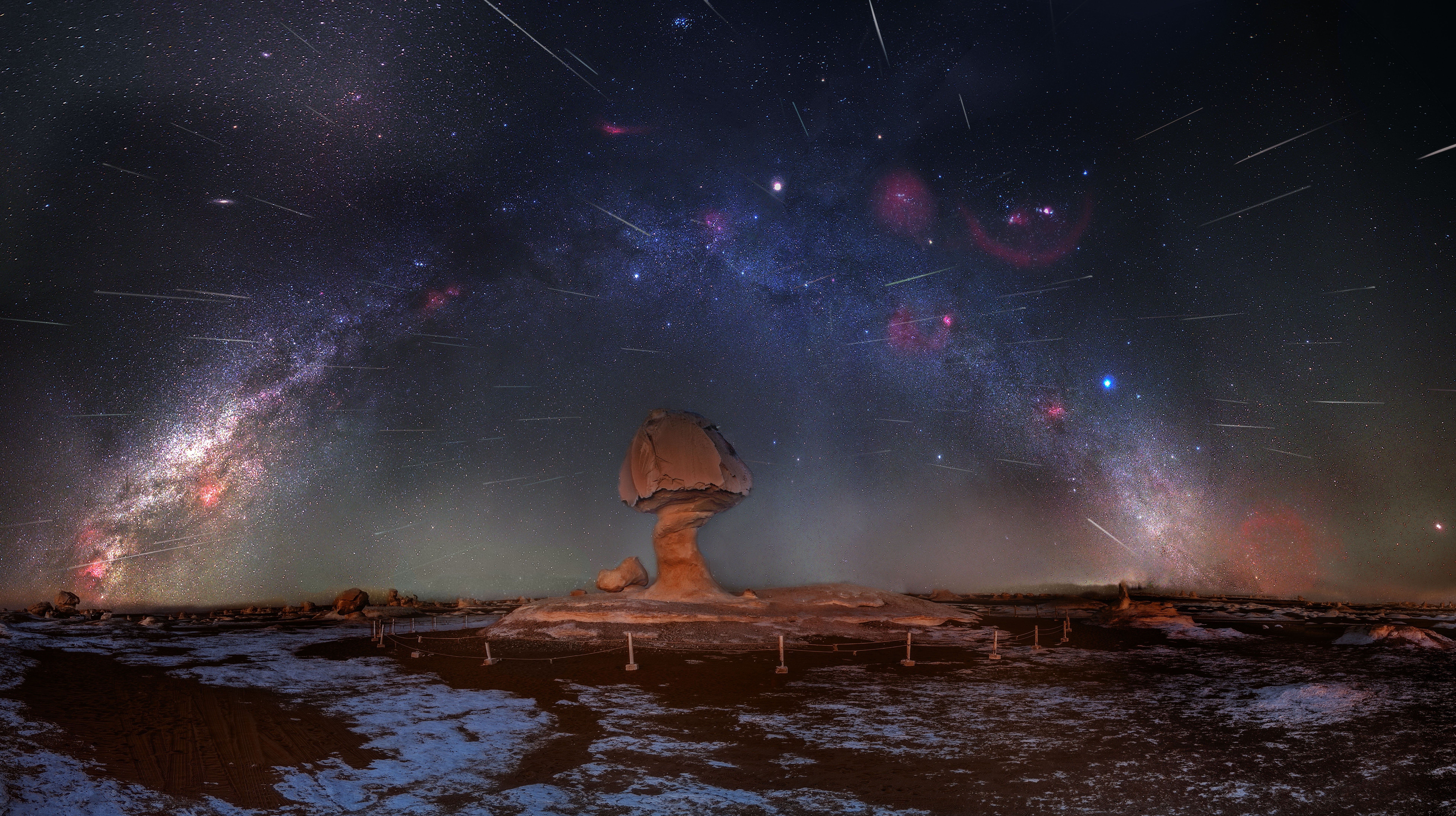
It’s that time of the year when the lights come out — not just on the trees but also in the skies as this week, the Geminid meteor shower reaches its peak. The Geminids are one of the best meteor showers of the year, consistently producing meteor rates of dozens per hour. Under a dark sky away from city lights, when activity peaks on the night of Dec. 14/15, you might see in the neighborhood of 120 meteors per hour.
As with all meteor showers, the best time to observe is from around midnight to 4 A.M., when the Earth’s rotation begins to carry your location into the storm at a higher apparent speed. But the Geminds are a shower were you still stand a chance of seeing some meteors before midnight. That’s because the shower’s radiant — the point from which the meteors appear to originate — lies in the constellation Gemini, which rises around sunset.
Unusually, the Geminids are generated not by dust left from a comet, like most meteor showers; instead, they come from an asteroid, 3200 Phaethon. The stream of dust intersects Earth’s orbit on a path that causes them to strike the atmosphere at a perpendicular angle. This makes the meteors appear to not move as fast as some showers, making them easier to spot.
Another element is in our favor this year: The Moon is only just past New, meaning it shouldn’t be a factor.
Click here for more on how to observe the Geminids and everything else in the sky this week.
Follow Astronomy magazine, the world’s best-selling astronomy magazine:
🌎 Website: https://astronomy.com
📖 Subscribe: http://subscribe.astronomy.com
📘 Facebook: https://www.facebook.com/AstronomyMagazine
📸 Instagram: https://instagram.com/astronomy.magazine
🐦 Twitter: https://twitter.com/AstronomyMag
Shop Celestron telescopes:
🔭 Website: https://celestron.com
Follow Dave Eicher:
📘 Facebook: https://www.facebook.com/davidjohneicher
📸 Instagram: https://instagram.com/eicher.david
🐦 Twitter: https://twitter.com/deicherstar









